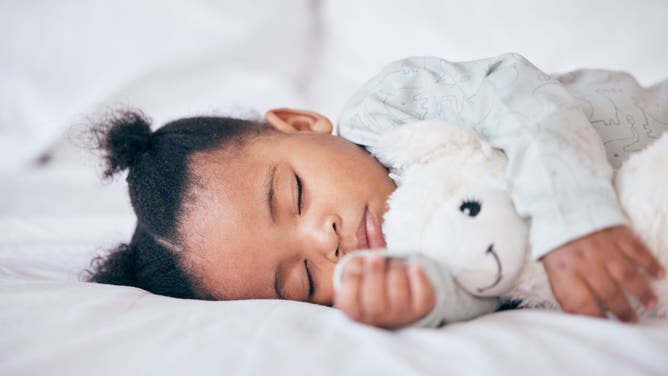This Sunday marks the end of daylight saving time when most people across the U.S. fall back, moving their clocks back by one hour.
This is your notice that the time change is coming. Here's what you need to know about the end of daylight saving time and how to prepare yourself and your family before it happens.
When does daylight saving time end?
Clocks will officially move ahead an hour at 2 a.m. Sunday.
If you use your smartphone as an alarm, there is no need to do anything. However, if an analog or digital clock not connected to Wi-Fi is your wake-up reminder, go ahead and set the clock one hour ahead before you go to bed.
Daylight saving time is observed from the second Sunday in March to the first Sunday in November, according to the U.S. Department of Transportation. The USDOT has overseen the time change since 1966, when Congress transferred responsibility from the Interstate Commerce Commission.

An alarm clock on bedside table.
(iStock / FOX Weather)
Where does the time change in the US?
Everywhere in the U.S., except Hawaii and most of Arizona, observes the time change; those states remain on standard time year-round. To make matters more confusing, the Navajo Nation in Arizona does observe DST. Some U.S. territories, including Puerto Rico and the Virgin Islands, do not change their clocks twice yearly.
There have been several attempts to make daylight saving time the year-round standard through the Sunshine Protection Act. However, the bill has yet to make it through the House and to the president's desk to become law.
How parents can help children adjust to the end of daylight saving time
The transition to standard time and vice versa can be rough for little ones and their parents. Several sleep experts have recommendations for helping your children adjust to the time change.

A baby girl sleeps with a stuffed animal. (Image: Adobe Stock)
(Adobe Stock)
The baby sleep gurus of "Moms on Call" have five steps to transitioning into standard time, starting with putting your child to bed at their normal time on Saturday night.
According to Moms on Call, the transition could take about three days until the family is adjusted to the time change.
The biggest suggestion by all sleep experts is to stick to your bedtime routine, whether that's a bottle, bath, book, or whatever order works for your little one.
Do you find yourself thinking about how daylight saving time will impact your sleep?
Some people may experience anxiety just from discussing the time change, as it can completely disrupt their schedule.
At 2 a.m. Sunday, the clocks will fall back one hour, marking the end of the time change known as daylight saving time for most states. Turning the clocks back allows our daylight to shift earlier in the morning.
Prepare now before daylight saving time
How Daylight Saving Time affects our circadian rhythms
Jeffrey Gardere, Certified Clinical Psychologist, discusses how Daylight Saving Time affects our circadian rhythms.
To help ease before Sunday, experts said you should prepare before the time changes.
"We still have a couple of days to change our sleeping habits because, as we know, this is all about the circadian rhythm, and it’s based on a 24-hour basis," psychologist Dr. Jeffrey Gardere said.
As the light and darkness shift, our hormones can also shift.
"It really does throw us off," Gardere adds.
What are the health effects on children?
The effects of time change are not limited to adults. Children in the family will also be impacted by the change.
"They’re going to be thrown off by it, too, and if it throws them off, it’ll throw them off at school where they’re going to be a bit deregulated," Gardere said.
Parents can help their kids adjust to the time changes by improving their nutrition to regulate their bodies more effectively.
"Lighter meals for a few days. That is very important," Gardere said.
When it comes time for bedtime, the TV should not be on because the light will keep them up even later.
"They’re going to be tired much earlier. That we already know," Gardere said.
Health risks and benefits of Daylight Saving Time
Brendan Duffy, Director at Catholic Health Sleep Services, explains the health risks and benefits of Daylight Saving Time.
The ability to put your children or yourself to bed earlier is dependent on how our bodies regulate energy, according to Gardere. It is recommended that parents allow their children to discover their own circadian rhythm, as they are quite adaptable.
Perhaps it simply boils down to spending some extra cozy time together, which is beneficial for everyone.

